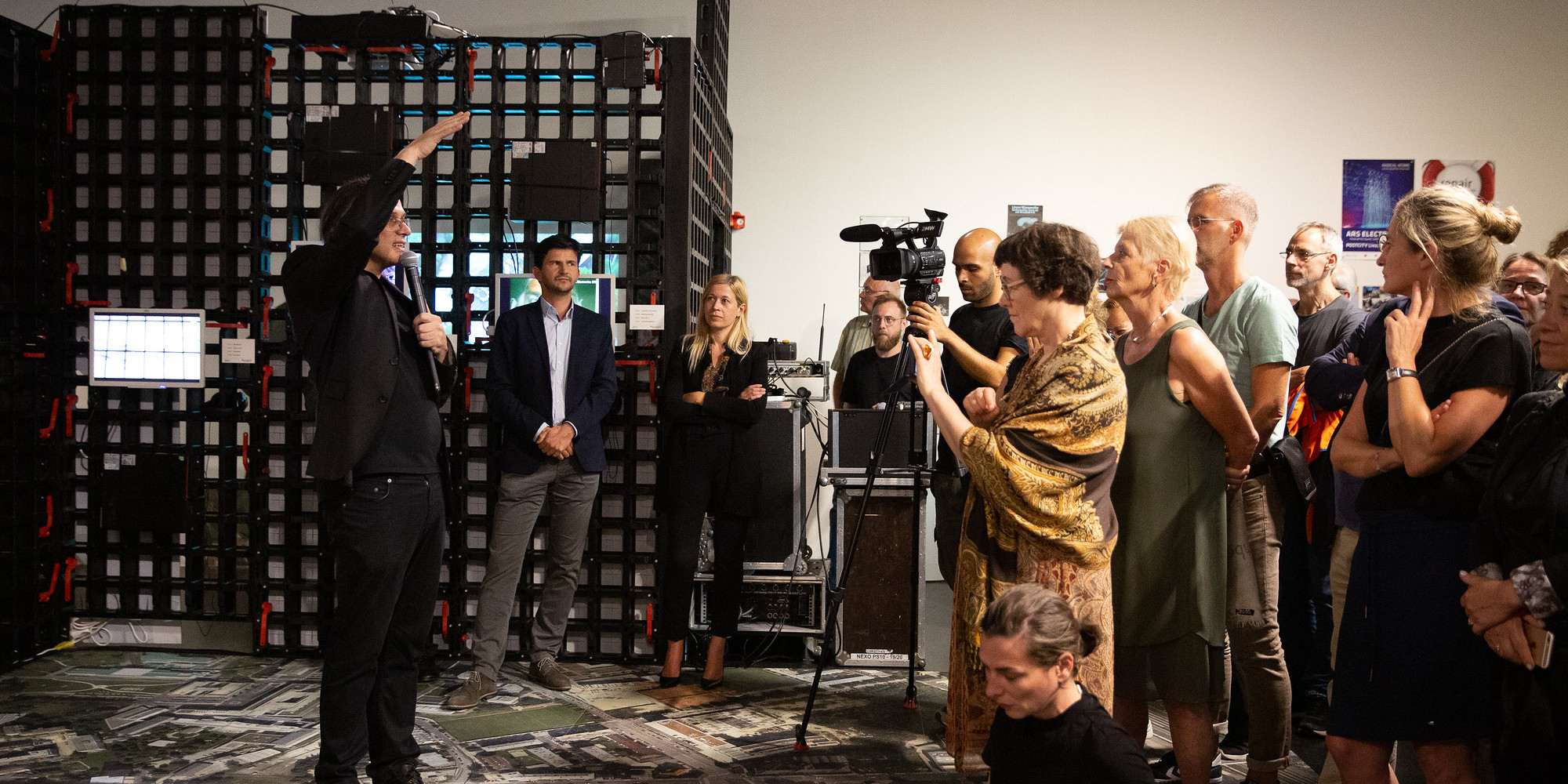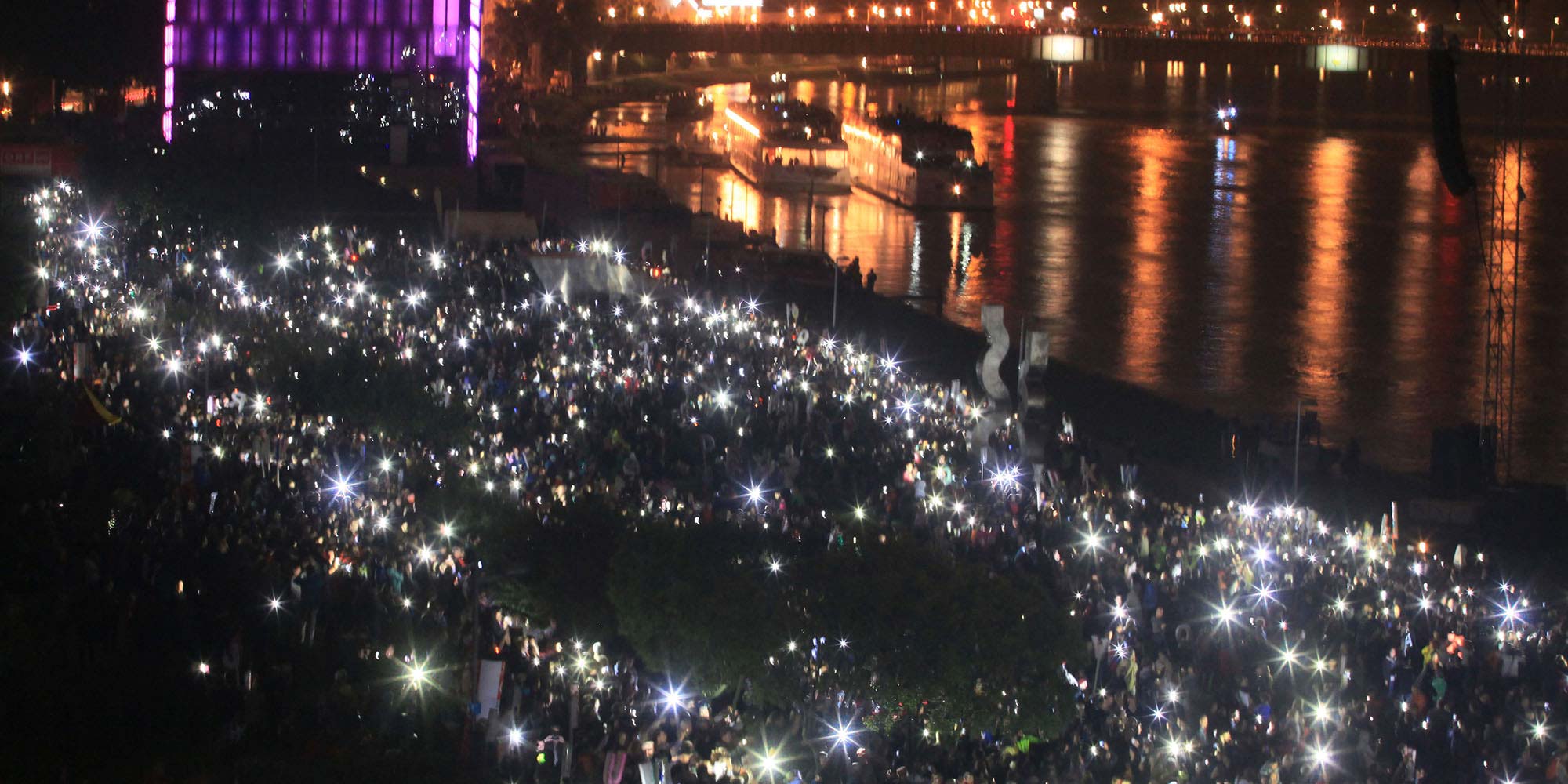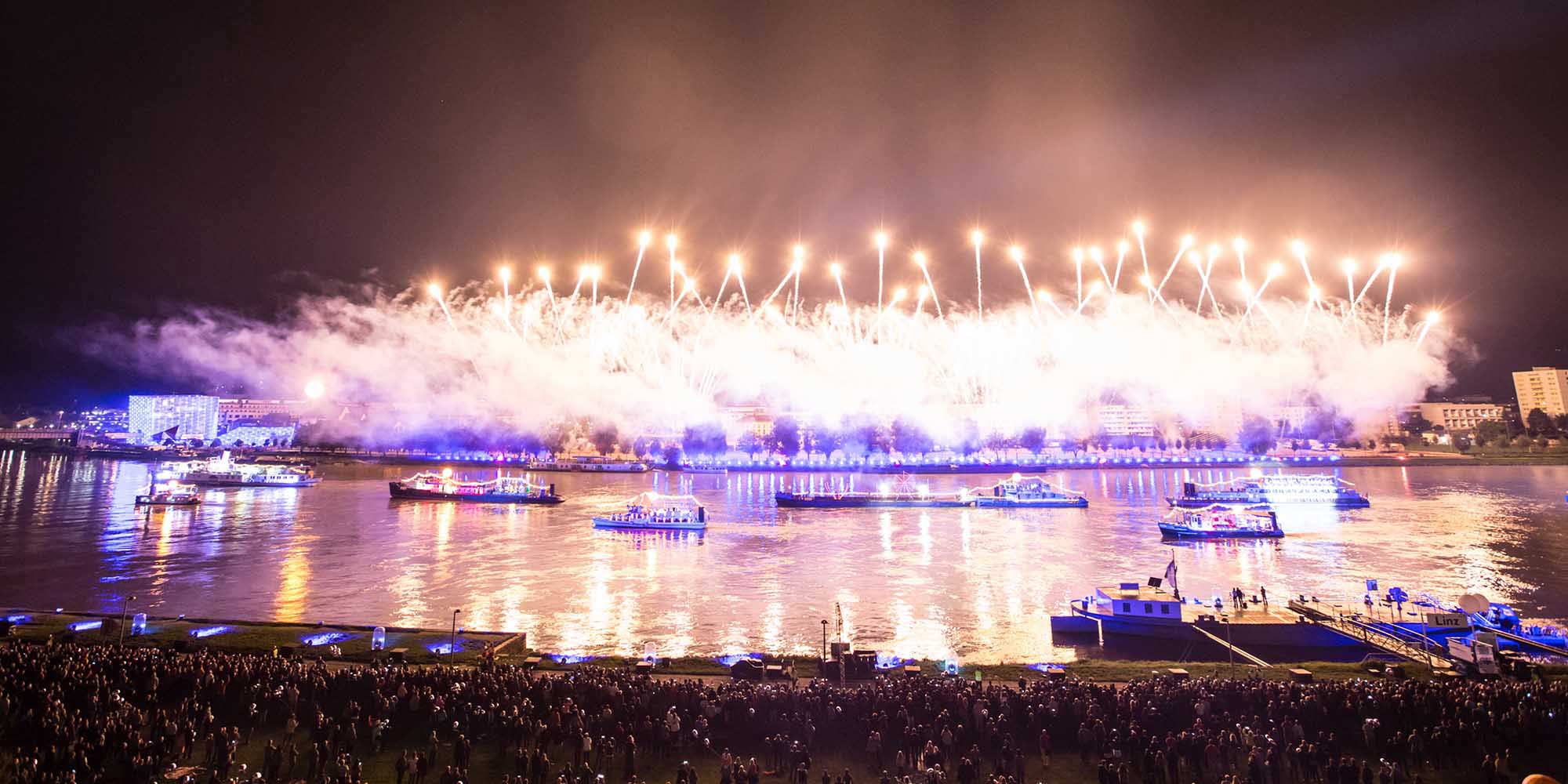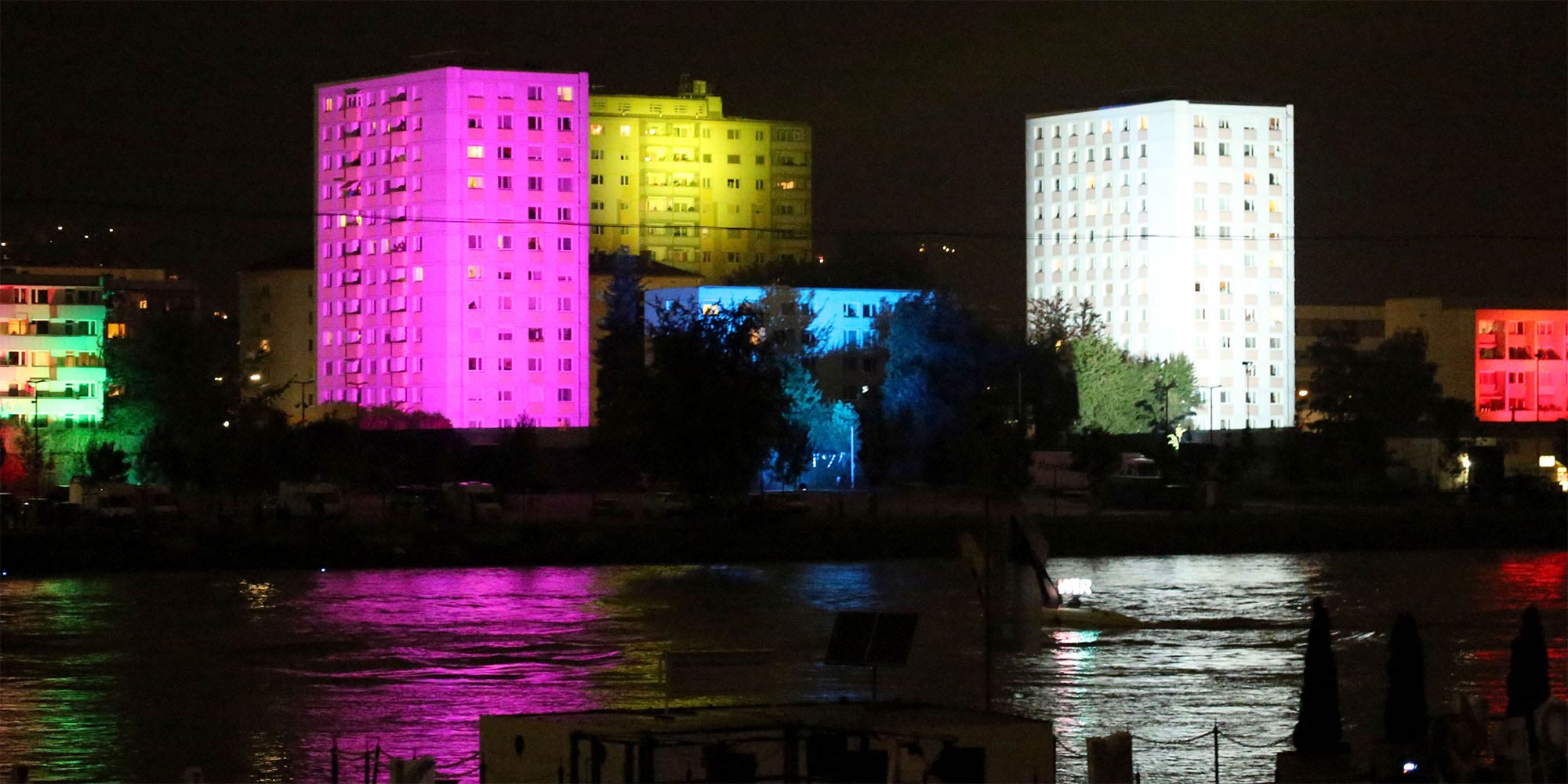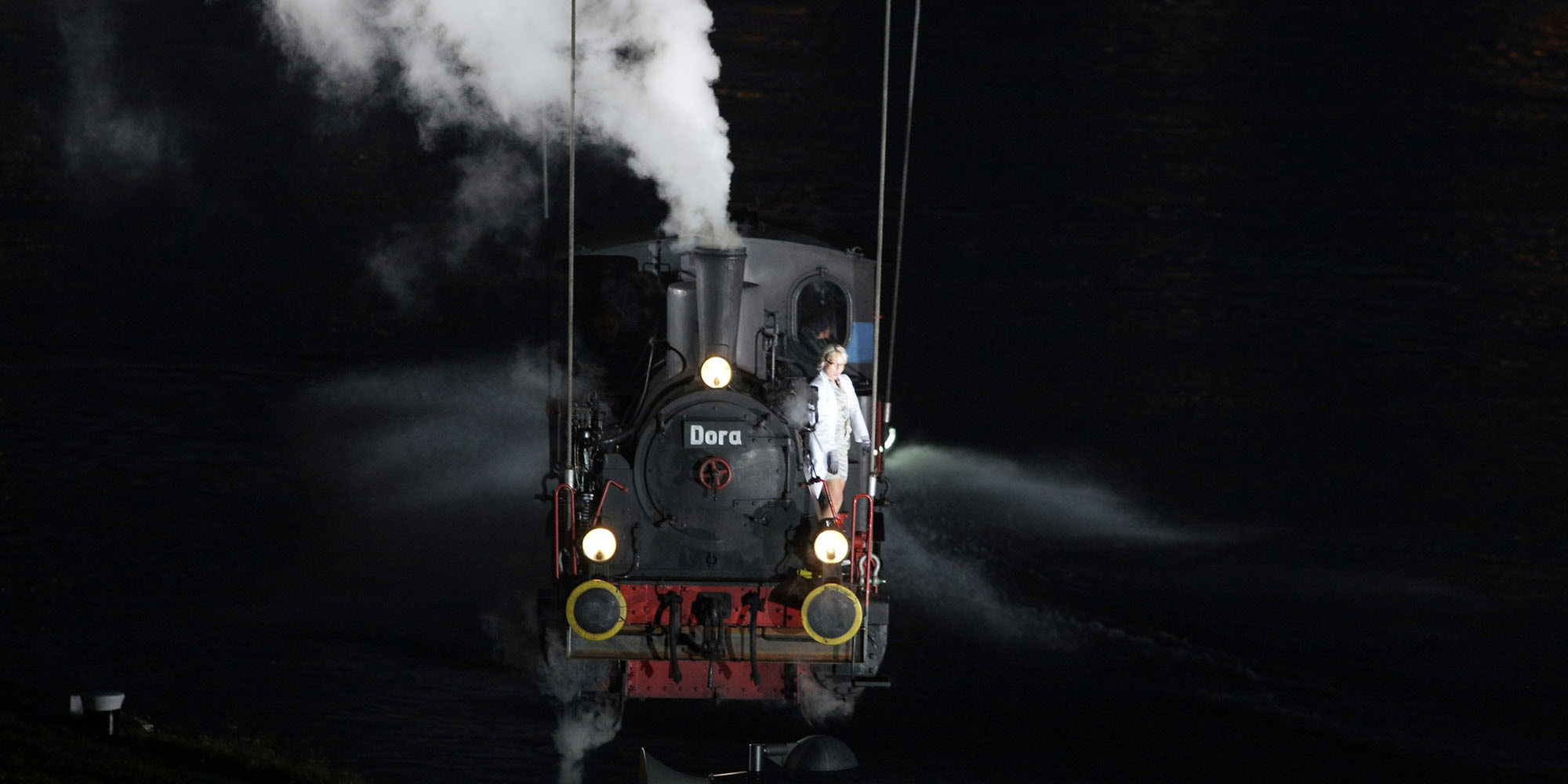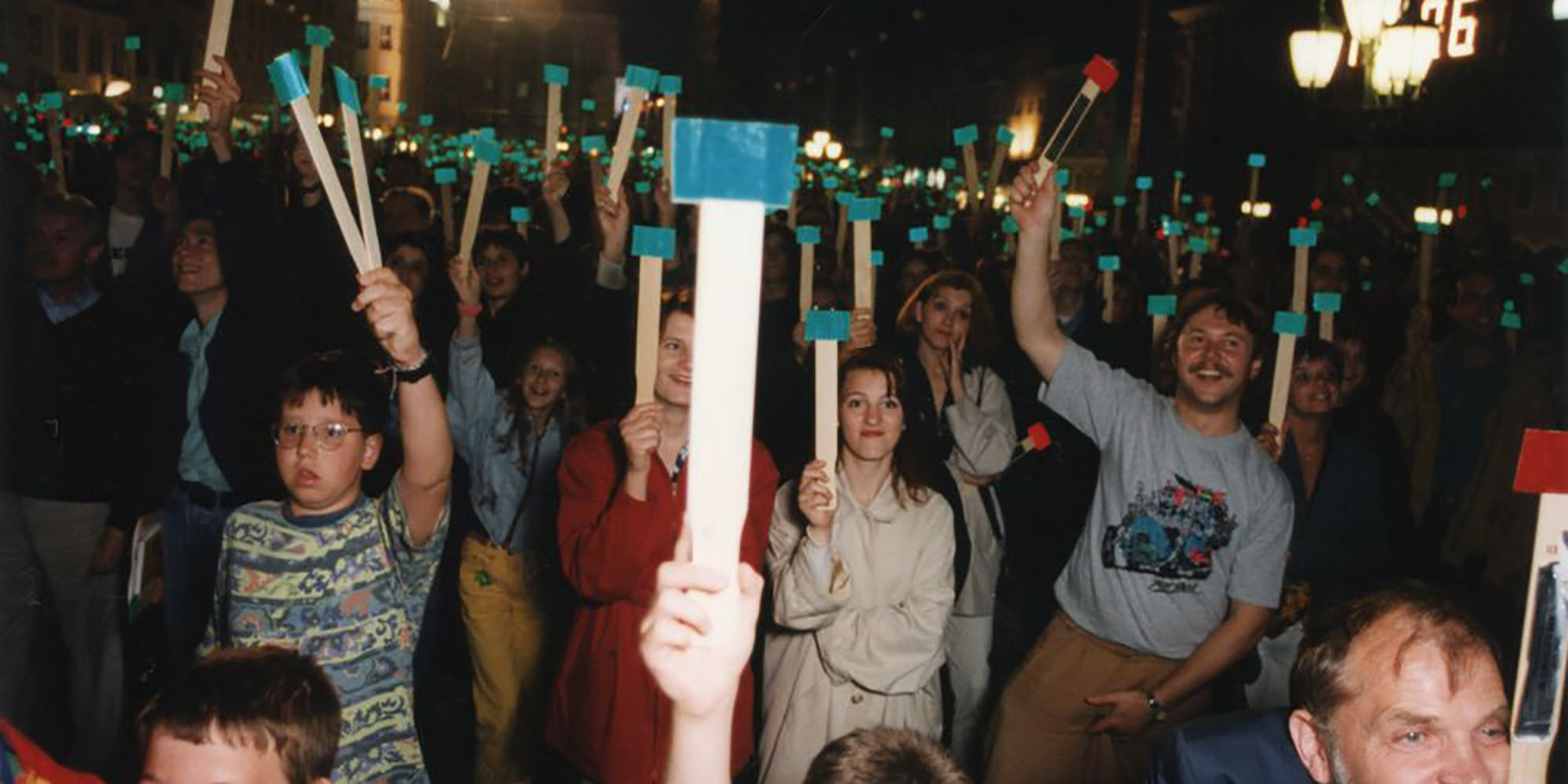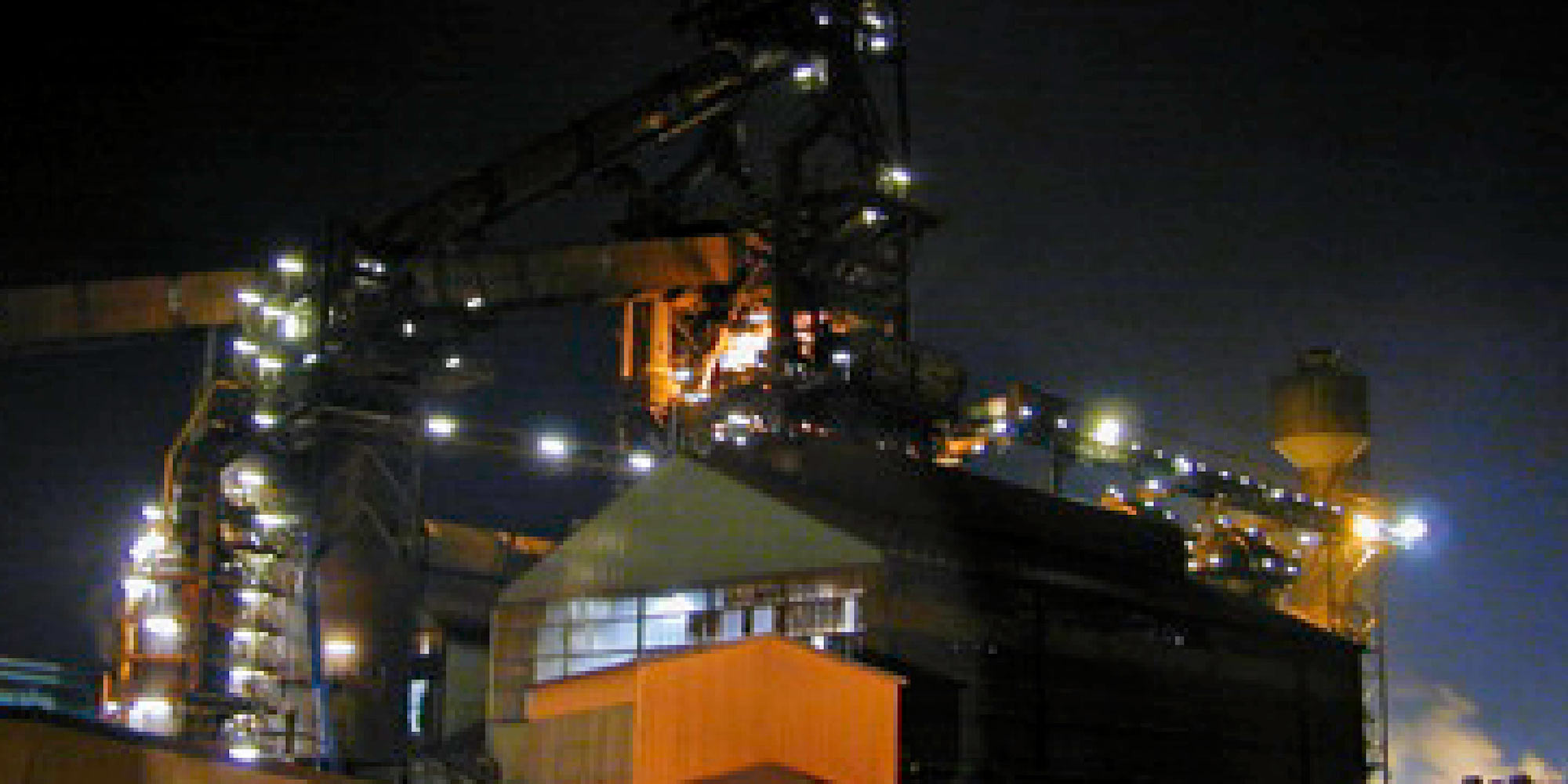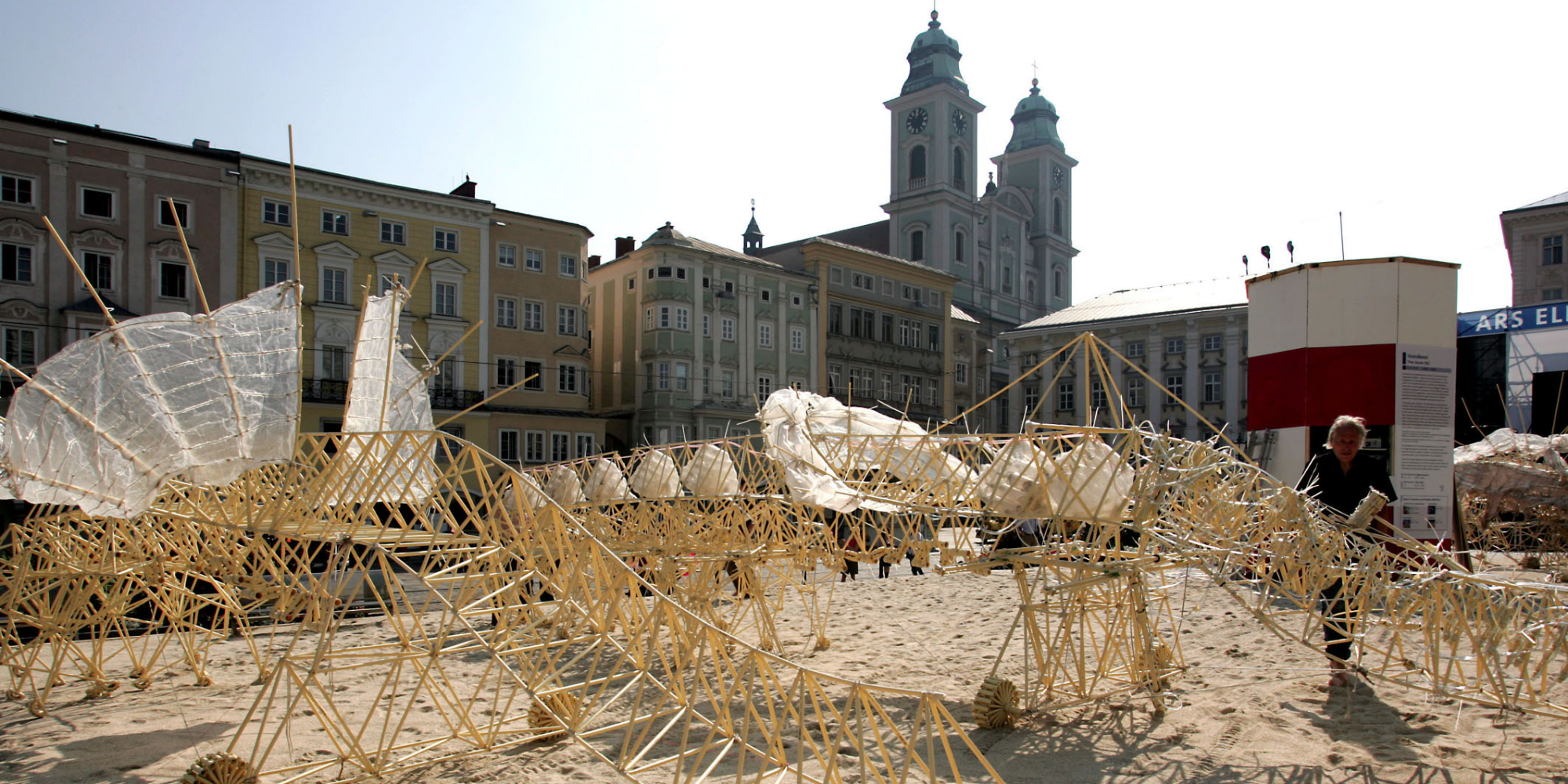A retrospective of the activity and impact of Ars Electronica in, with and for Linz: Ars Electronica’s art, media and participation projects in public space – from 1979 to the present day.
“No other Austrian city has undergone such dramatic economic, social and demographic change in the 20th century as Linz. For decades, the city’s image was almost exclusively determined by heavy industry. For 40 years, Linz was the heart of the Austrian steel industry – the steel city,” wrote Siegbert Janko, longstanding and influential cultural director of the city of Linz, about the special conditions of cultural policy in Linz at the end of the 20th century.
His description also relates to an important and formative starting point for the emergence and development of Ars Electronica: a city in transition that saw art and culture as an important force in shaping its future opportunities. It is one of the founding myths of the unique Ars Electronica project that it came to life as a festival for art, technology and society – as an initiative of the City of Linz and the ORF – to initiate, accompany and support the transformation that the city urgently needed at that time. Computers and microelectronics were obvious economic prospects for the future of an industrial city. From the very beginning, the importance of social and cultural aspects was recognized and taken seriously, an extraordinary and special aspect that was certainly also due to the influence of Ars Electronica co-founder Hannes Leopoldseder.
It is therefore only natural that Ars Electronica has been working in and with the city with a great deal of energy and enthusiasm from the very beginning, repeatedly mobilizing considerable resources for this purpose. It quickly turned out that media art was particularly well suited to breaking out of the established venues for showing art and mediating culture. It allowed artists to the public sphere in a distinctive way or, even better, to create their own public sphere.

The later orientation of the Ars Electroncia Center as a “museum and school of the future” and its broad positioning as an art, education and research institution today are a logical consequence of these early developments.
The exhibition divides the huge multitude and variety of projects and initiatives in the public space into four thematic sectors: Donaupark, Hauptplatz, Voest, Stadtwerkstatt.
The Donaupark not only symbolically stands for the city as a living space, but is also the starting point of this exciting journey, as the Linzer Klangwolke was also invented in 1979 for the opening of the first festival. In its founding year, it was not only a spectacular open-air concert, but also extraordinarily prophetic with its “Radio in the Window” project. Weeks before the Klangwolke, the people were invited to join the Klangwolke, or “cloud of sound,” on Saturday evening by putting their radios in the window and creating a real Klangwolke throughout the country, far beyond the Donaupark. Thousands of people participated. From today’s point of view this can be called a successful pioneer project of “Social Media,” in which a medium is not only used to broadcast information or entertainment but to inspire action and let people participate on a large scale. Thirty-three years later, another world premiere took place: In 2012, for the first time, 50 drones flying as an autonomous swarm rose in the Donaupark and created a unique show, a development of the Ars Electronica Futurelab that gained attention all over the world.
The Hauptplatz is one of the most frequent locations for projects in public space and many residents of Linz still remember the project *Audience Participation* by Loren Carpenter in 1994, in which 4000 people were able to play “Pong” together on the Hauptplatz. But the Hauptplatz as a thematic sector of the exhibition also stands for the important and active role of the city administration without whose intensive support many of these projects would not have been possible. Until today, a “by-product” of what has been perhaps the largest participation project in the history of Ars can be found in the entrance hall of the Linz Town Hall. In 2007, a photo flyover over Linz was organized and publicly announced, inviting the population to set visible signs in their gardens, on their roofs, on business premises and in parks. The result – a huge aerial photograph of “Ganz Linz” – was subsequently integrated into the floor of the entrance hall of Linz Town Hall and is still being updated by the city administration. It is also very popular – people come to the town hall especially to see and explore their city.
The third thematic sector is “Voest.” The huge company premises, founded as Herman Göring Werke during the Second World War, were the economic engine of the city soon after the war, shaped the identity of Linz as a steel city for decades, and today remain a sign of Linz’s success as a location for modern technology.
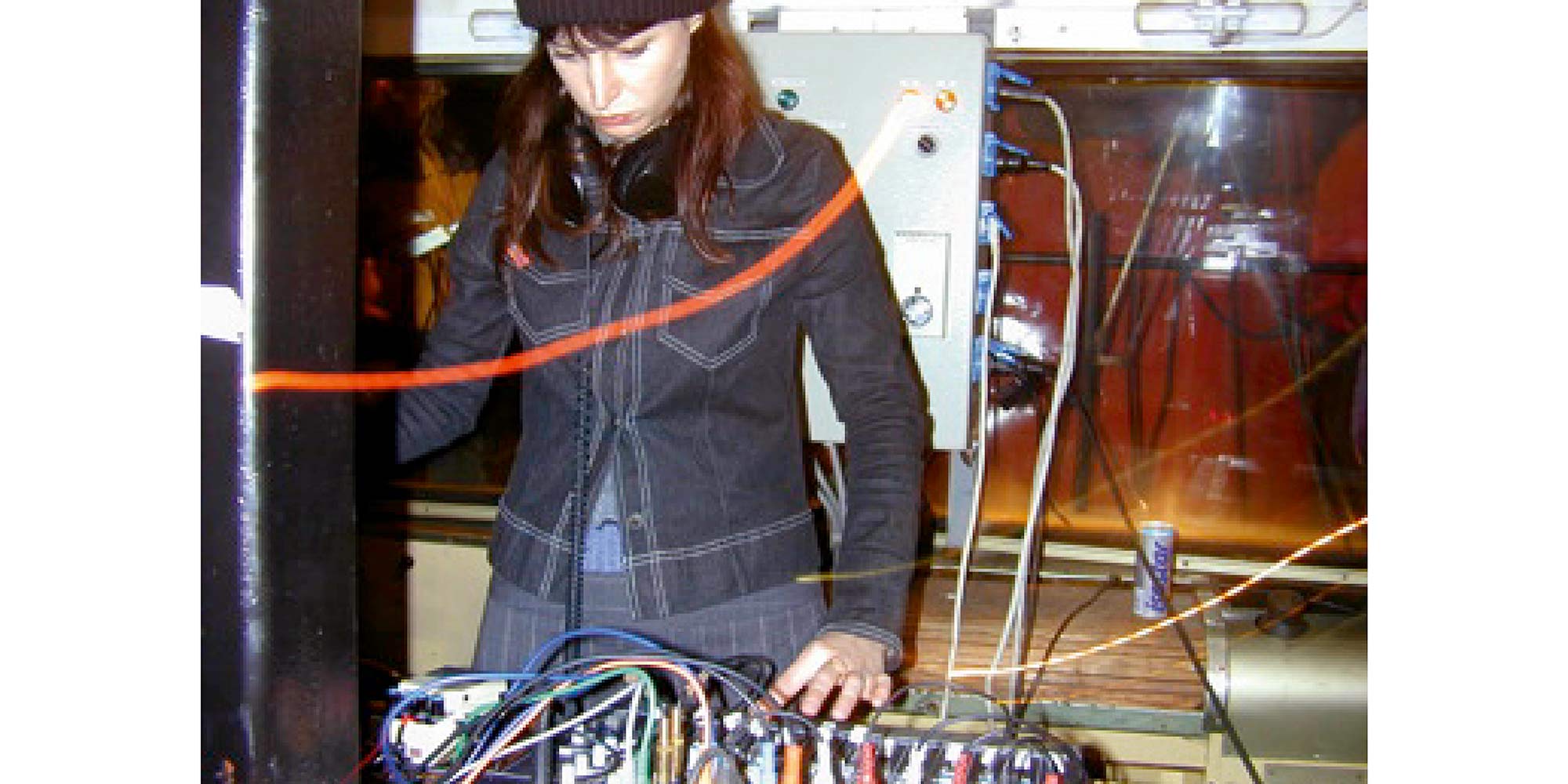
Voest not only appeared as a theme of the Ars Electronica Festival from the very beginning (steel symphony, steel opera …), but also as an iconic venue for unusual projects. It’s hard to imagine, but in the early 1990s there was also an artists’ group named “Contained” that had moved into a quarter in the middle of the Voest area. It gave rise to the collective “Times Up,” which is still successful today. The nocturnal musical train rides through the Voest area, organized by Wolfgang “Fadi” Dorninger for the festival from 1996 to 2000, are also legendary.
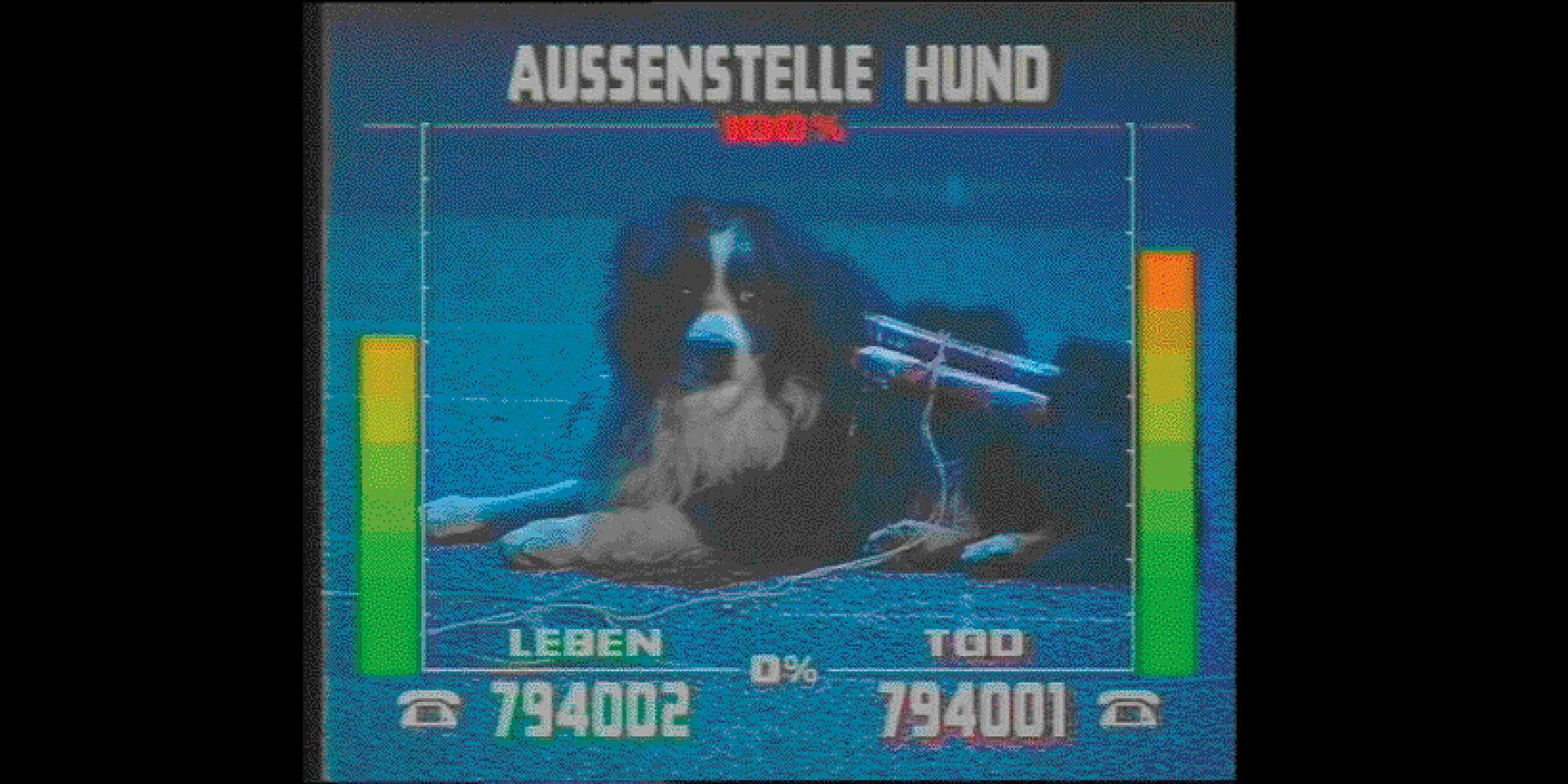
The fourth sector is dedicated to the role of the independent scene, based on many of the Stadtwerkstatt projects that took place as part of Ars Electronica. The Stadtwerkstatt, today the oldest autonomous cultural center in Linz, was also founded in 1979 and was the starting point of a vital artist scene in Linz that played a decisive role in shaping the way from the steel city to the cultural city and still has an important influence on the festival today. The term “Hundesprengung” (Engl. blasting dogs) is still used by many to refer to the city’s major cooperation project with ORF-OÖ at Ars Electronica 1991. The “Bug Race” of 1997 or, most recently, the “Turnton Docklands” of Times Up 2016, are also examples of this influential and fruitful interaction.
Looking at the broad spectrum of creative and innovative players active in Linz today, many of whom are now anchored far beyond Ars Electronica in the city’s universities or have completed projects such as building a hub for the economic value creation of creative work in the former tobacco factory, confirms the courageous founding idea of Ars Electronica: to include art and culture as a catalyst in the transformation of the city, which is also a great opportunity for the challenges of the coming decades.
